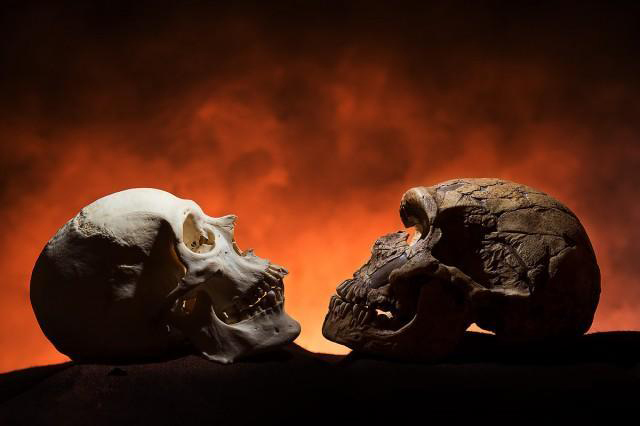TORONTO – We may pay attention to our fingers, our noses, our eyes, but how often have you thought about your chin?

We don’t typically pay attention to our chin (unless we’re trying to hold something with it), and we certainly don’t wonder why we even have one. But there are some scientists who have.
We are the only primates to have a chin (and some argue the only mammal). So what makes us so special?
Some studies have suggested that humans developed chins to help protect the jaw from stresses. Others suggest that it’s due to the development of speech (just think about the movement of our tongue), and even sexual selection.
But a recent study suggests that our chin formed out of the evolution of our faces.
“You can think of the chin as an area of the lower jaw that gets left behind as the face retracts during human evolution,” said Nathan Holton, who studies craniofacial features and mechanics at the University of Iowa and who led the study.
He explains that it’s about the differential growth — the growth of different parts of our face — has a lot to do with that little (or maybe not-so-little if you’re a Mulroney) prominence at the bottom of our face.
“If you look at a Neanderthal, he’s got a big projecting face; the mid part of the face sticks out more than the lower part of the face, so they don’t have a chin. But in humans, we’ve got a face that doesn’t project out as far. It’s much more retrusive. And so as a result, we have a mid-face that doesn’t grow as much as the lower part of the jaw. So you end up with a more prominent chin.”

The study analyzed the heads and faces of about 40 people from three years old to 20 years old. The researchers found that mechanical forces — such as chewing — weren’t strong enough to create new bone down in the mandible area, or lower jaw.
Holton said that, on average, humans don’t chew as much as primates.
“We chew a lot less today than we did in the past…studies show about 6 minutes to a half-hour a day,” said Holton. Chimps on the other hand can spend as much as seven hours chewing.
“So, chewing may affect other areas of the jaw, but whether or not you have a chin is probably independent of that.”
So they believe that it was simple geometry that created our chins: as our heads became smaller — and our heads are roughly 15 per cent smaller than that of the Neanderthals — the chin emerged as a bony prominence.
Another conclusion was that as we evolved not only physically, but socially, our bodies adapted to that as well. Instead of males being highly testosterone-driven hunter-gatherers, they formed social networks and became less likely to fight over territory as agriculture developed. This dropped testosterone levels and their faces became smaller.
So why study our strange little chin?
“It seems like an odd question: ‘Why do we have a chin?'” said Holton. “But big picture, it tells us something about the relationship between the jaws, how bone develops and how it responds to function.”
The study was published in the online Journal of Anatomy.






Comments